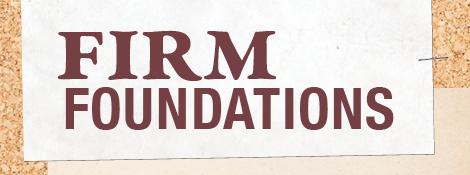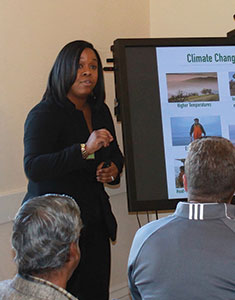UMBC’s reputation as a place where companies find terrific employees didn’t come out of thin air. The quality of its students and the reputation of its faculty for innovative teaching and attention to student success played a foundational role in building that pedigree.
Yet it was UMBC staff members who built on that foundation to help students succeed in an increasingly competitive job market and forge UMBC’s widely acknowledged reputation as a magnet for employers looking to make the right hire.
Betty Glascoe was there at the beginning, hired by UMBC in July 1970 to start a program (“The Placement Center”) to connect students and recent graduates to employers.
“At that time, I knew very little about the career services operation,” recalls Glascoe. “ I had read extensively, but I knew that I needed much more. To secure the position, I had to convince my VP that if given the opportunity I would do an excellent job if hired. So, I had to make certain that I didn’t disappoint. I visited colleges, universities and employing institutions up and down the East Coast as far away as New York. Everyone was so helpful. It enabled me to create meaningful relationships with employers and other educational institutions. With determination and drive, I studied their programs and services, and set in place a mission statement, objectives and goals that would enable me to successfully market the Center and provide the appropriate programs and services for our student population and the employing institutions to the advantage of UMBC.”
The challenges in the era of tie-dye and bell bottoms didn’t just include teaching skills in interviewing, resume writing and nonverbal communication.
“Many of the students didn’t have suits,” Glascoe remembers. “They didn’t have the appropriate dress clothes that the companies required….It was apparent that we really had to talk about how one dresses for success. As a result, one of the programs that staff agreed to include among the workshops offered was “Dressing For Success.” We felt that the best institutions to provide this information most effectively were the stores that specialized in clothing. Among them were Jos. A. Bank, Macy’s, and the Limited. They provided excellent information – and to encourage purchases, they provided discount coupons to the students’ delight.”
Glascoe’s savvy grew with each of the dozens of programs and initiatives she and her hard working and committed staff created to advance student success after graduation. Reflecting on her 35 years at UMBC, she remains proud of her pioneering role as an African-American woman blazing new trails for a young university – a school now seen by recruiters as a hotbed of talent for their companies and agencies.
For some people, my being an African-American woman was a little difficult to digest. At the time, (to my comprehension) I was the first African American person hired to direct a career center at a predominantly white educational institution in the country. I knew that I had to be a success. I worked very hard. In the beginning, I would come in the office on Saturdays and Sundays with my young baby just to stay ahead. But then those persons around me acknowledged that I was committed and determined, and I began to receive considerable support. My boss had described me as “a workhorse,” and the responses from those around me began to change.’”
Glascoe says that students were the driving force behind all her efforts:
“I was determined that students would have the opportunities that should be available to them. The major objective was to make certain that students were able to make a smooth transition from the academic environment to the work place and/or graduate professional educational institutions.”
She recalls a breakthrough moment at a conference in the 1980s, when an executive started singing her praises when she introduced herself.
“He was so kind. He took me around the room to introduce me to companies WHOSE representatives were not recruiting at UMBC.” says Glascoe. “He said, ‘If you are not recruiting at UMBC, you should be. You need to meet this lady. UMBC is a great university and they have excellent students. We have hired some and they are tremendous.’ It was exciting to hear that UMBC had made such an impact.”
One hire made by Glascoe and her team that had tremendous impact on UMBC’s trajectory was John Martello ’76, M.S. psychology, a then-graduate student hired to help build UMBC’s Cooperative Education Program.
It was the start of Martello’s highly influential career at UMBC, where he held a number of key positions, including vice provost for the Division of Professional Studies, chairman and CEO for UMBC Training Centers, and founder and executive director of The Shriver Center. (He will officially retire at the end of the Spring 2016 semester.)
Changing university culture to embrace relationships with employers and others was a key element in the successes Glascoe and Martello had in their efforts. “As hard as it is to believe now,” Martello recalls, “back in the 70s and 80s, the feeling of our faculty – and at most universities, was “ that education is best which occurs in the classroom.”
Martello says that the eventual embrace of this important work with employers was hastened by other qualities present in the university’s culture since its founding. “UMBC, in my experience, has always been – we call it entrepreneurial, but it’s probably intrapreneurial,” says Martello. “Always with a huge ambition, and an outsized vision, that couldn’t possibly be supported with the resources at hand. But instead of giving up or being despondent or saying we’ll wait until the money comes in, we were figuring out a way to do things aimed at quality, and hope, and ambition, and to be the best. This connection to the world has served us well, because we generate resources and we extend our reach and reputation.”
Martello cites groundbreaking programs undertaken at the Shriver Center such as the Maryland Police Corps – which offered financial support for students who made a commitment to becoming police officers – and initiatives such as the much-acclaimed Choice program and the Shriver Peaceworker Fellowships that still make a difference in communities today.
“I would say it all fits under the term engagement,” says Martello. “That term is bandied about, but in UMBC’s case, it’s the authentic belief that theory, knowledge creation – which is what universities have traditionally done – informs practice. But also that practice informs theory. So for a variety of reasons at different levels – some practical, some philosophical – UMBC has really taken the lead in engagement.”
Martello also oversaw a tremendous growth in the Division of Professional Studies and UMBC Training Centers, which enroll more than 10,000 students and professionals annually, expand educational opportunities for thousands of non-traditional students, and generate nearly $30 million in revenue for the campus.
While the professional studies programs “bring us closer to the professional community and working professionals,” Martello sees the Training Centers as “unlike anything I’m familiar with nationally, because it is an LLC owned by a public university.”
Martello says that efforts to ensure student success post-graduation and to weave professionals into the UMBC community are “part of the institutional fiber, part of the mission values. We just do that, and I think it makes us very unique. It’s why we survived this terrible economy, because our students were having problems and challenges just like everyone else. But it’s pretty well known that UMBC graduates are superb, and they managed to get employment because of who they were and what they had done, and the culture and programs at UMBC.”
— Richard Byrne ’86
Tags: Winter 2016




